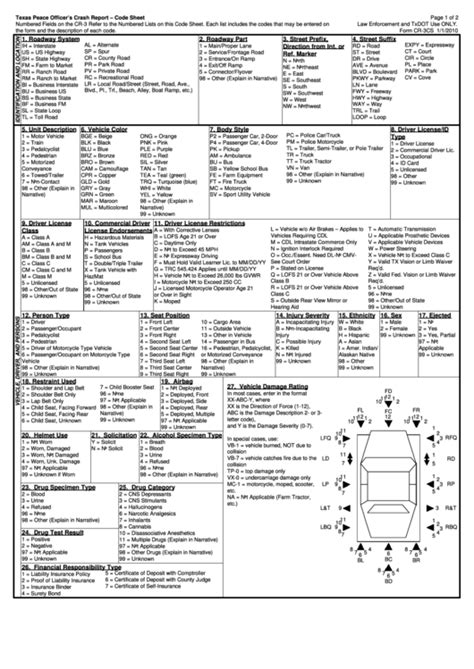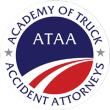In the world of car accidents, understanding the documentation process is essential for individuals involved in the Lone Star State’s roads. But decoding Texas Police Accident Reports can sometimes feel like deciphering a foreign language. That’s where our comprehensive guide comes in. Whether you’re a driver, passenger, or simply a curious Texan, this article will provide you with a clear understanding of car wreck documentation in Texas.
Our expert team has analyzed numerous accident reports, studying every aspect from the initial incident description to the final conclusion. We’ve distilled this knowledge into an easy-to-follow guide that will empower you to navigate the sometimes confusing world of car wreck documentation in Texas.
From understanding the importance of report numbers to deciphering the codes used to classify accidents, our guide covers everything you need to know. We even provide tips on what to do if you believe there may be errors in the report.
So, whether you’re a seasoned driver or a newcomer to the Texas roads, this guide is an indispensable tool for gaining a deeper understanding of car wreck documentation in the Lone Star State.
Importance of understanding car wreck documentation
Car accidents can be traumatic and confusing experiences, especially when it comes to understanding the documentation that follows. In the Lone Star State of Texas, decoding police accident reports is crucial for all individuals involved in car wrecks. These reports not only provide a detailed account of the accident but also serve as important legal documentation for insurance claims, lawsuits, and other legal proceedings.
Understanding car wreck documentation is important for several reasons. First and foremost, it allows individuals to have a clear understanding of what happened during the accident. This includes information such as the date, time, and location of the accident, as well as the parties involved and any witnesses present. Additionally, it provides an objective account of the incident, which can be invaluable when dealing with insurance companies or legal disputes.
Moreover, understanding car wreck documentation enables individuals to identify any errors or discrepancies in the report. Mistakes in the report can have serious consequences, potentially affecting insurance claims and legal proceedings. By being familiar with the documentation process, individuals can spot inaccuracies and take the necessary steps to correct them.
Key components of a Texas Police Accident Report
To fully understand Texas Police Accident Reports, it is important to familiarize oneself with the key components of these reports. These components provide a comprehensive overview of the accident and are crucial for accurately documenting the incident.
- Report Number: Each Texas Police Accident Report is assigned a unique report number. This number serves as a reference for all parties involved and is used for tracking purposes. It is important to note and keep this number as it will be required when obtaining a copy of the report or when referring to it in any future correspondence.
- Incident Description: The incident description section provides a detailed account of what happened during the accident. It includes information such as the sequence of events leading up to the accident, the actions of each involved party, and any contributing factors such as weather conditions or road hazards. This section is crucial for understanding the circumstances surrounding the accident.
- Vehicle and Driver Information: This section of the report contains essential details about the vehicles and drivers involved in the accident. It includes information such as the make, model, and license plate number of each vehicle, as well as the driver’s name, contact information, and driver’s license number. This information is vital for identifying the parties involved and establishing liability in the accident.
- Witness Statements: If there were any witnesses to the accident, their statements are often included in the report. These statements provide additional perspectives and can be helpful in determining fault or corroborating the accounts of the involved parties. Witness statements can play a crucial role in insurance claims and legal proceedings.
- Diagrams and Measurements: Many Texas Police Accident Reports include diagrams and measurements of the accident scene. These visual representations help to illustrate the positioning of the vehicles, the location of any skid marks or debris, and other relevant factors. Diagrams and measurements can provide valuable insights into the dynamics of the accident and can be useful when reconstructing the events leading up to the crash.
- Officer’s Conclusion: At the end of the report, the investigating officer often includes their conclusion regarding the cause of the accident. This conclusion is based on their analysis of the evidence, witness statements, and any applicable laws or regulations. The officer’s conclusion can have a significant impact on insurance claims and legal proceedings, making it a crucial component of the report.
Understanding these key components of a Texas Police Accident Report will empower individuals to navigate the documentation process with confidence. By familiarizing themselves with these aspects, individuals can ensure that they have a complete understanding of the incident and can take appropriate actions based on the information provided.
Get Your FREE Texas Accident Report
100% FREE.
No Payment Necessary.
How to obtain a Texas Police Accident Report
Obtaining a copy of a Texas Police Accident Report is essential for all parties involved in a car wreck. These reports serve as official documentation of the accident and are often required for insurance claims, legal proceedings, and other related matters. Fortunately, obtaining a copy of the report is a relatively straightforward process.
- Contact the Reporting Police Department: The first step in obtaining a Texas Police Accident Report is to contact the police department that responded to the accident. The contact information for the relevant department can usually be found on their website or by calling the non-emergency police number. Provide them with the necessary details, such as the date, time, and location of the accident, as well as any other relevant information they may require.
- Pay the Required Fee: Most police departments charge a fee for providing a copy of the accident report. The fee amount may vary depending on the department and the specific report requested. Once you have contacted the department, they will inform you of the fee and the accepted methods of payment. It is important to note that the fee is often non-refundable, regardless of whether the report contains the desired information.
- Provide Identification and Proof of Involvement: To ensure that only authorized individuals have access to the report, the police department may require you to provide identification and proof of involvement in the accident. This can include your driver’s license, vehicle registration, and insurance information. By verifying your identity and involvement, the department can protect the privacy and security of the individuals involved in the accident.
- Wait for Processing: Once you have completed the necessary steps and paid the required fee, the police department will process your request and provide you with a copy of the Texas Police Accident Report. The processing time may vary depending on the department’s workload and procedures. It is advisable to inquire about the estimated processing time when making your request.
Obtaining a copy of a Texas Police Accident Report is an important step in understanding and navigating the aftermath of a car wreck. By following these steps, individuals can ensure that they have access to the necessary documentation for insurance claims, legal proceedings, and other related matters.
Deciphering the Codes and Abbreviations Used in Accident Reports
Accident reports in Texas often contain a plethora of codes and abbreviations that can be overwhelming at first glance. However, understanding these codes is crucial to comprehending the report accurately. Let’s take a closer look at some of the most common codes and abbreviations you may encounter:
- MV: This code refers to “Motor Vehicle” and is used to identify the type of vehicle involved in the accident. It could be followed by additional codes to specify the vehicle type, such as “MV-1” for a passenger car or “MV-2” for a motorcycle.
- POI: Short for “Point of Impact,” this code indicates the area of the vehicles where collision occurred. It helps investigators understand the sequence of events leading to the accident. Common POI codes include “POI-1” for the front, “POI-2” for the rear, and “POI-3” for the side.
- V1, V2, etc.: These codes represent the different vehicles involved in the accident. V1 typically refers to the “At-Fault” vehicle, while V2, V3, and so on represent other vehicles. These codes are essential for identifying the responsible parties involved in the accident.
Understanding these codes is just the first step. It’s also crucial to interpret the abbreviations used in accident reports:
- DUI: This abbreviation stands for “Driving Under the Influence” and indicates that alcohol or drugs may have played a role in the accident.
- DOT: Short for “Department of Transportation,” DOT is often mentioned in accident reports to refer to road conditions or infrastructure issues that may have contributed to the accident.
- LKA: This abbreviation stands for “Last Known Address” and is used to identify the address of the involved parties. This information is crucial for insurance companies and legal proceedings.
By familiarizing yourself with these codes and abbreviations, you’ll be better equipped to understand the details of an accident report.
Understanding the Narrative Section of an Accident Report
The narrative section of an accident report provides a detailed account of the events leading up to the accident. It includes information gathered from witnesses, involved parties, and investigating officers. While the narrative can sometimes be lengthy and complex, breaking it down into key components can make it easier to understand. Here are three important elements to look out for:
- Sequence of Events: This part of the narrative outlines the order in which the events leading to the accident occurred. It might describe how one vehicle failed to yield, resulting in a collision with another vehicle. Understanding the sequence of events is crucial for determining fault and liability.
- Contributing Factors: The narrative section often includes a list of factors that may have contributed to the accident. These factors can range from driver distractions, such as texting or adjusting the radio, to external conditions like weather or road construction. Identifying these contributing factors can help paint a clearer picture of what happened.
- Statements from Involved Parties: The narrative may include statements from the drivers, passengers, or witnesses involved in the accident. These statements provide insight into their perspective of the events and can help corroborate or challenge other evidence. Understanding the statements can be particularly useful if you are involved in a legal dispute or insurance claim.
To comprehend the narrative section effectively, it’s essential to read it thoroughly and take note of any details that may be relevant to your situation. If something is unclear or you believe there may be errors, it’s important to address them promptly.

Interpreting Diagrams and Sketches in Accident Reports
Accident reports often include diagrams or sketches that visually represent the scene of the accident. These diagrams can provide valuable information about the positioning of the vehicles, the direction of travel, and the locations of traffic signs or signals. Here are some key elements to consider when interpreting these diagrams:
- Vehicle Positions: The diagram will typically show the positions of the vehicles involved at the time of the accident. The shapes used to represent the vehicles, such as circles or squares, are labeled with corresponding numbers or codes. Understanding the vehicle positions can help determine the point of impact and the relative positions of the vehicles on the road.
- Road Features: The diagram may also include road features, such as lanes, intersections, or road markings. These features provide context for understanding how the accident occurred. For example, if the diagram shows a one-way street or a stop sign, it can help establish the right-of-way and potential traffic violations.
- Traffic Flow: The direction of travel arrows in the diagram indicates the flow of traffic. Understanding the traffic flow is crucial for determining who had the right-of-way and who may be at fault. It can also help identify any traffic violations, such as running a red light or making an illegal turn.
While diagrams and sketches can be incredibly helpful, it’s important to remember that they are not always drawn to scale. They are simplified representations of the accident scene and should be used in conjunction with the narrative and other evidence to get a complete picture of the accident.
Common Mistakes and Inaccuracies in Accident Reports
Accident reports play a crucial role in documenting the details surrounding a car wreck. However, these reports are not always free from errors or inaccuracies. Understanding the common mistakes that can occur in accident reports will help you navigate their complexities with confidence.
1. Incomplete or Inaccurate Incident Description
One common mistake found in accident reports is an incomplete or inaccurate incident description. The incident description is a crucial part of the report as it provides a summary of what occurred during the accident. However, due to the chaotic nature of car wrecks, it’s not uncommon for officers to overlook or misinterpret certain details. This could result in an incomplete or inaccurate representation of the events leading up to the accident. It’s important to carefully review the incident description and ensure that all relevant details are included. If you notice any discrepancies, it’s advisable to contact the police department and request a correction.
2. Errors in Identification and Contact Information
Accurate identification and contact information of all parties involved in the accident are vital for insurance claims and legal proceedings. However, accident reports sometimes contain errors in this regard. Names, addresses, and contact numbers may be misspelled or incorrectly recorded, which can cause significant delays and complications during the claims process. It’s crucial to double-check your personal information as well as the information of other parties involved in the accident. If you find any mistakes, notify the police department as soon as possible to rectify the errors.
3. Inconsistent or Missing Vehicle Information
Another common mistake found in accident reports is inconsistent or missing vehicle information. Details such as the make, model, and license plate number of all vehicles involved are essential for insurance purposes and legal proceedings. However, officers may inadvertently omit or mistakenly record incorrect information. It’s important to review the vehicle information section of the accident report and ensure that all details are accurate. If you identify any inconsistencies or missing information, notify the police department promptly to have the report amended.
How Accident Reports Impact Insurance Claims and Legal Proceedings
Accident reports serve as critical evidence in insurance claims and legal proceedings following a car wreck. Understanding how these reports impact these processes is essential for anyone involved in an accident in Texas.
1. Insurance Claims
Accident reports are crucial when filing insurance claims. Insurance companies rely on these reports to assess fault and determine the extent of damages. The report provides an objective account of the accident, including the officer’s observations and statements from witnesses. Insurance adjusters use this information to evaluate the claim and negotiate a settlement. It’s important to review the accident report carefully and ensure that all relevant details are accurately represented. Any errors or inaccuracies could potentially harm your claim, so it’s advisable to consult with an attorney if you believe the report contains mistakes.
2. Legal Proceedings
In the event of a lawsuit following a car wreck, accident reports become vital pieces of evidence. Attorneys use these reports to establish fault, prove negligence, or challenge the findings of the report. The report’s descriptions, diagrams, and witness statements can significantly impact the outcome of legal proceedings. It’s crucial to thoroughly review the accident report and consult with an attorney if you have any concerns about its accuracy. An experienced attorney can help navigate the legal complexities and ensure that your rights are protected.
Conclusion: The Importance of Seeking Legal Guidance when Dealing with Accident Reports in Texas
Decoding Texas Police Accident Reports is no easy task, but understanding their significance is crucial for anyone involved in a car wreck. From insurance claims to legal proceedings, these reports play a pivotal role in determining fault and assessing damages. By familiarizing yourself with the common mistakes and inaccuracies in accident reports, you can take proactive steps to rectify any errors and protect your interests.
Remember, if you believe there are mistakes in your accident report, it’s essential to seek legal guidance. An experienced attorney can help you navigate the complexities of the legal system, ensure that your rights are protected, and work towards a favorable resolution. With the knowledge and understanding gained from this comprehensive guide, you can approach car wreck documentation in Texas with confidence and clarity. Stay safe on the Lone Star State’s roads and always remember the importance of accurate accident reports.





























